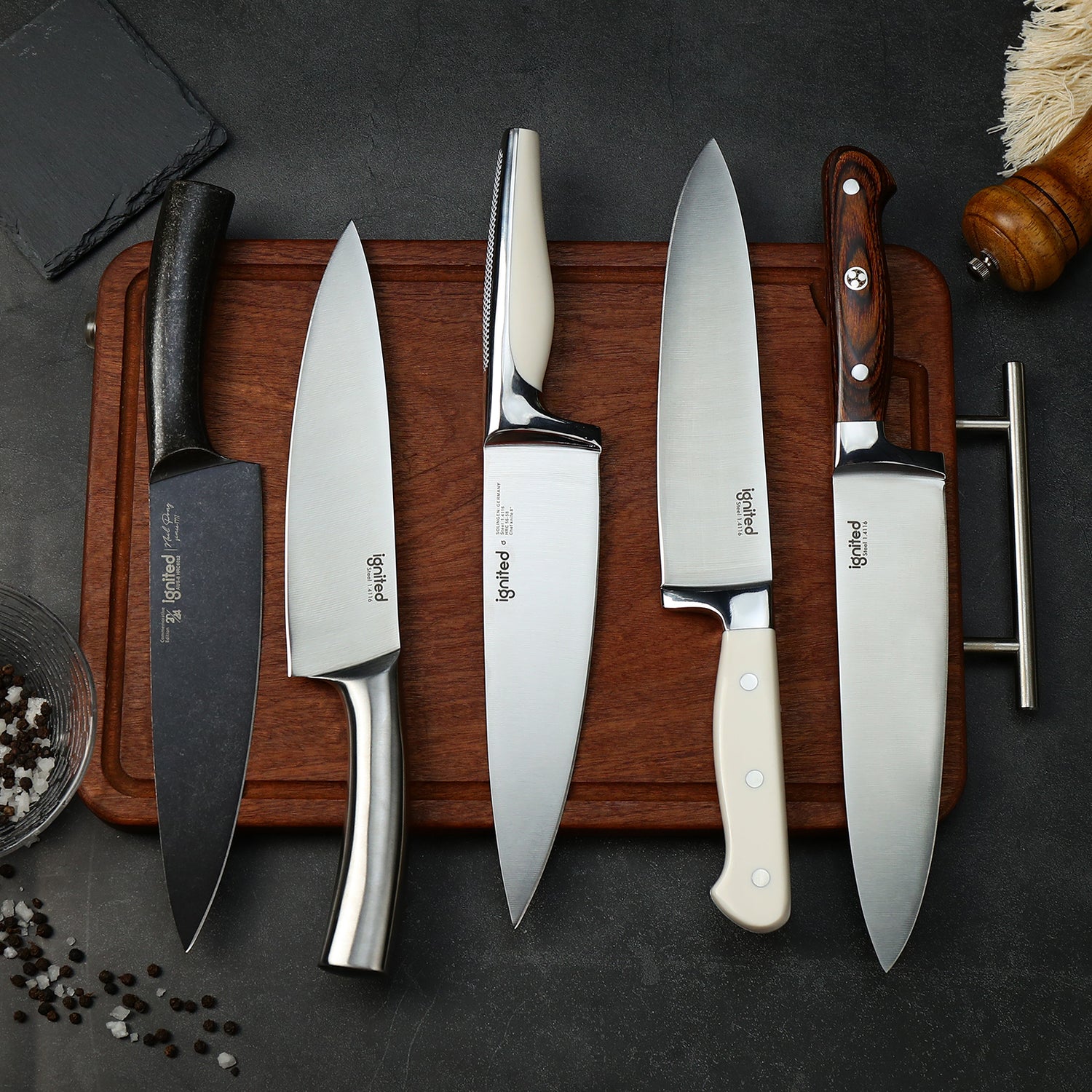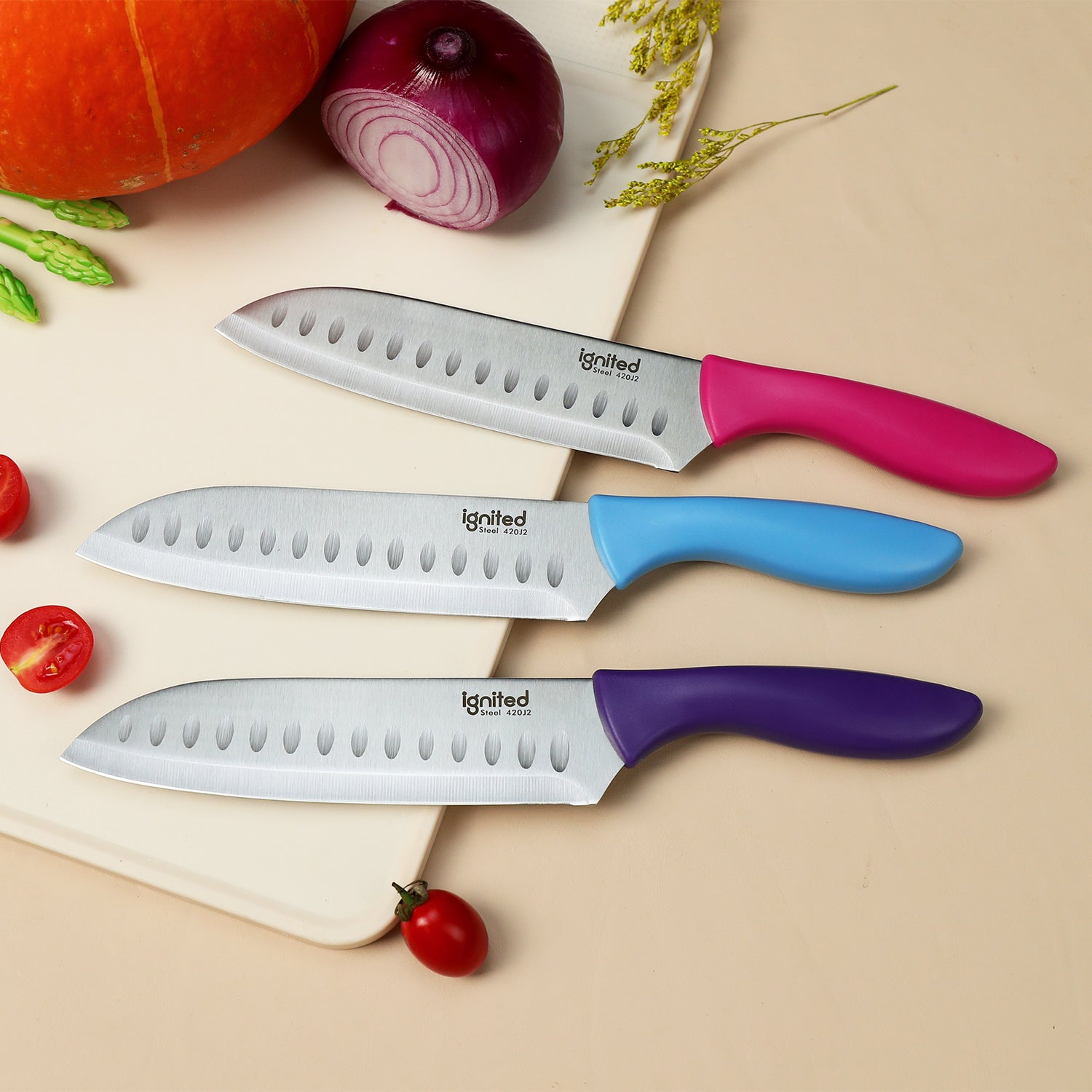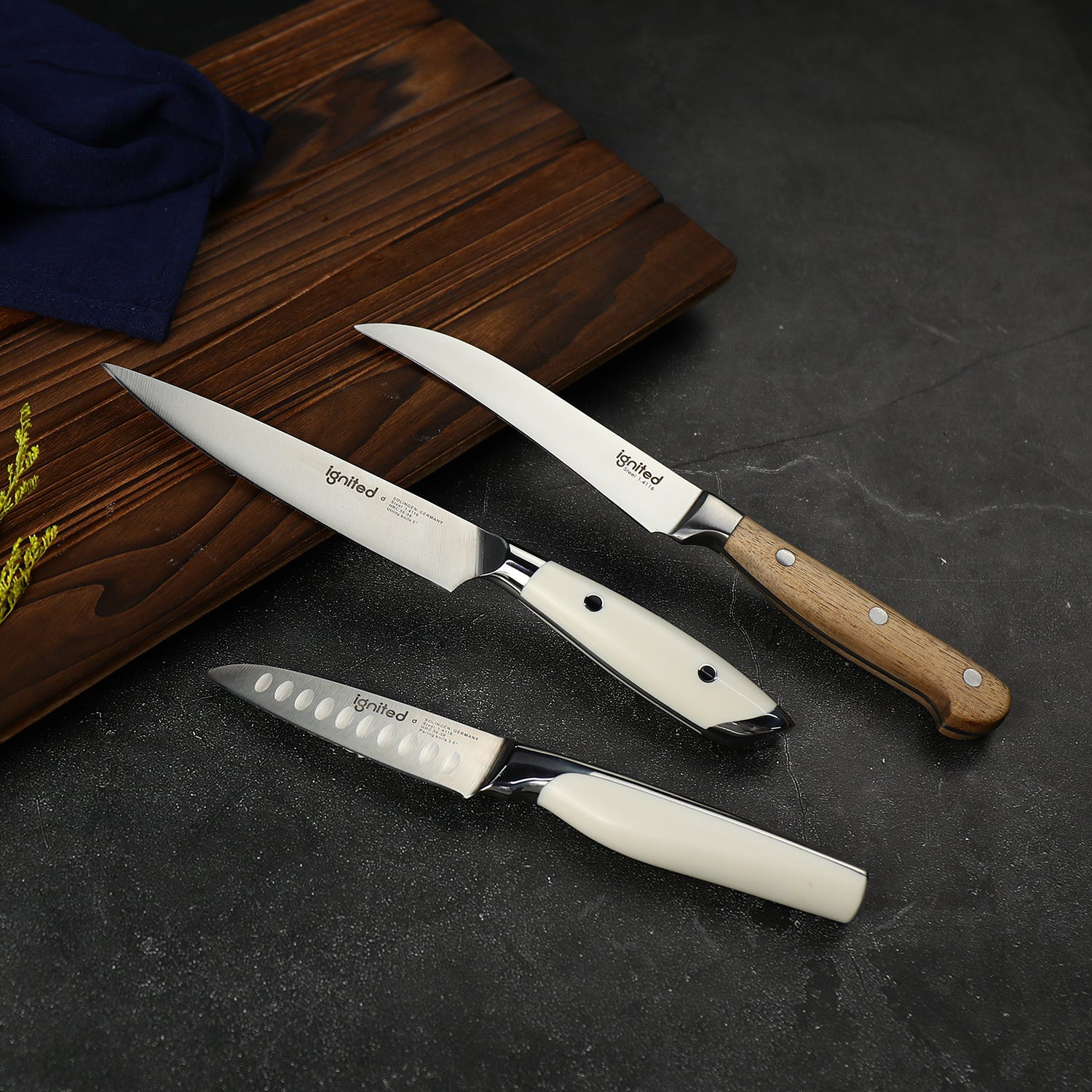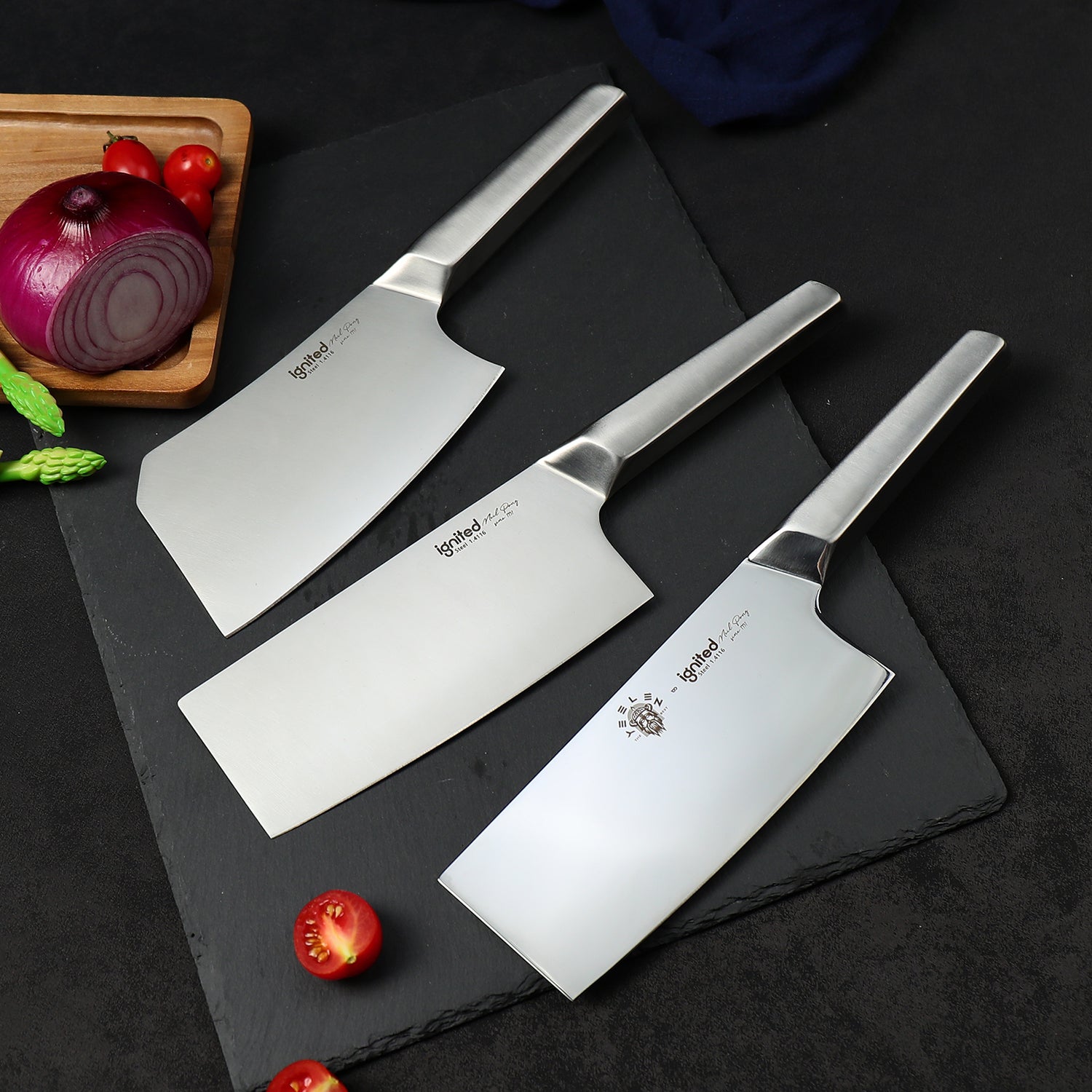When shopping for a high-quality kitchen knife, you’ll likely come across the term “full tang”. But what does that mean, and why is it important for performance and durability?
This article explores what full tang really is, how it compares to other tang types, and why it’s often considered the gold standard for serious cooks.
What Is “Tang” in Knife Construction?
The tang refers to the portion of the blade that extends into the handle. It plays a crucial role in a knife’s balance, strength, and lifespan. There are several common tang types:
- Full Tang – Blade steel runs through the full length and width of the handle
- Partial Tang – Blade steel only extends partway into the handle
- Rat-Tail Tang – A thin rod-like tang, often found in low-cost knives
- Encapsulated Tang – A full tang hidden within molded handles
Full Tang vs Partial Tang: Quick Comparison
| Feature | Full Tang | Partial Tang |
|---|---|---|
| Strength | High – Suitable for heavy-duty use | Lower – May break under stress |
| Balance | Evenly distributed, better control | Handle may feel light or unstable |
| Durability | Long-lasting, resists separation | Handle joint more prone to failure |
| Cost | Higher – Premium construction | Lower – Cheaper to manufacture |
| Use Case | Professional kitchens, serious home cooks | Casual/light home use |
Why Full Tang Matters
1. Strength Under Pressure
Full tang knives are built from a single piece of steel running from blade to handle butt. This makes them highly resistant to bending, breaking, or snapping—ideal for cutting hard vegetables or meat bones.
2. Better Balance and Control
Because the metal extends throughout the handle, the weight is evenly distributed. This gives you more control and less fatigue, especially for longer prep sessions.
3. Long-Term Durability
With no glued-in or press-fit joints, full tang knives last longer under repeated use and cleaning. They're less likely to loosen or come apart over time.
4. Safety During Use
Loose handles or snapping blades can cause injuries. Full tang construction offers added stability and reduces the risk of accidents in the kitchen.
Are Full Tang Knives Always Better?
Not always. While full tang knives are great for strength and durability, they’re usually heavier and more expensive. Some Japanese knives intentionally use partial tangs for lighter, more agile handling in precise cuts. It ultimately depends on your cooking style and needs.
Full Tang in Ignited Knives
At Ignited, our signature chef’s knives and cleavers are engineered with full tang construction. This ensures peak performance, excellent balance, and reliable handling in any kitchen setting. From home cooks to professionals, our knives are built to last.
Conclusion
If you’re serious about cooking, a full tang knife is an investment worth making. It offers durability, precision, and peace of mind every time you pick it up. Look for quality materials, solid construction, and ergonomic handles—and your knife will serve you well for years to come.




